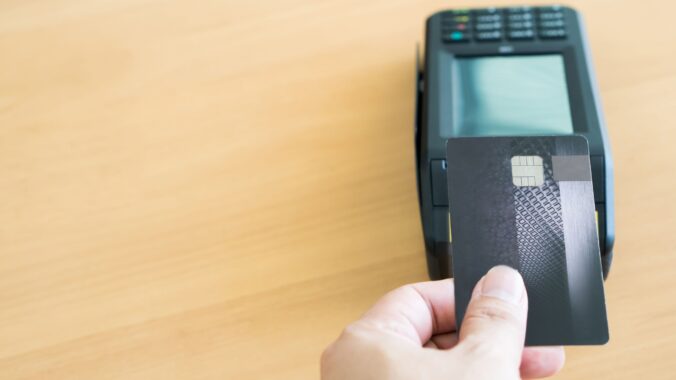Have you ever found yourself in a situation where making a payment became an awkward ordeal? Perhaps you’ve caused a hold up at the tube barriers while waiting for your mobile device to recognise your fingerprint, or maybe you’ve drawn a blank on your PIN number at the supermarket checkout.
This predicament is a familiar one. However, the payments world is in a state of constant evolution, striving to make the experience faster and more seamless.
One of the biggest advances in recent times is the launch of Thales Biometric Payment Cards. These physical cards integrate a built-in fingerprint scanner that replaces the need for PINs during transactions – resulting in an experience better than traditional cards and existing contactless options.
Biometric payment cards are finally getting the attention they deserve and hitting the mainstream, thanks to their ability to address genuine, real-world problems. Here are five ways our cards are transforming how we make payments…
- Seamless transactions without PINs: We have enough to think about when making a purchase – from our account balances, through to the necessity of the purchase, and even the whereabouts of our belongings at that moment in time. Biometric payment cards can free us up from entering our PIN, or signing for the purchase, so we can better focus on our surroundings. They also save us valuable time so we can quickly get on with our days.
- Battery efficiency: A distinctive feature of our biometric cards is that they have no battery. Instead, they draw energy from the payment terminal to verify the cardholder and will only start a transaction when they know there’s enough energy to properly run the biometric authentication. This capability significantly minimises the likelihood of payment failures, ensuring reliability in each transaction.
- Pay any amount: Experiencing payment rejections can be discomforting. Often, this happens when we have simply exceeded transaction limits, or when we have maximised the allowed number of contactless payments, and the need for further verification is triggered. Biometric payment cards circumvent this through heightened compliance and security measures, enabling users to make payments of any amount, as frequently as needed, while upholding complete safety.
- Reduced risk of fraud: The contactless limit is frequently being raised – which is great news when you want to make a fast, fuss-free payment. However, this capability can become a problem in the scenario of a card being lost and someone else takes it on a spending spree. Biometric payment cards eliminate this risk and provide a strong safeguard against unauthorised expenditure.
- Intuitive ease of use: There are so many different types of card readers out there now that it’s not always obvious to consumers where to place the card – on the top of the machine, to the side, or underneath. However, Thales’ biometric payment cards can work in almost any position because they measure the power of the POS terminal before starting a transaction. This means that authentication can be carried out even if the user shows some hesitation.
With these cutting-edge cards having undeniable advantages, an important question arises: Why haven’t they already achieved widespread adoption? The answer lies in the historical cost barriers faced by banks.
However, as transaction volumes surge, economies of scale come into play which are starting to significantly reduce costs for banks. Secondly, the banks are realizing the gains of an enhanced user experience in enrolment, payment and performance to drive customer service efficiencies. The simplified integration of biometric cards into a bank’s existing infrastructure also cuts many of the fixed costs associated with offering these cards on a wide scale to customers.
Biometric payment cards are also reaching a tipping point due to heightened demand for personalized payment solutions. A myriad of sophisticated design options such as colored-edge cards, metallic inks and rPVC all contribute to making these cards stand out from the crowd even more. And personalization extends beyond aesthetics to encompass practicality; languages are configured directly in the card making it easy for an issuer to customize the user experience.
Customers using these cards will also attest to the fact you don’t have to be tech-savvy to use them. They make life easier, not more difficult.
The final word
Biometric payment cards are the future, and we’re proud to be leading the market with product innovation. For consumers, these cards remove any limitation or concern with contactless payments. Meanwhile, for banks, It’s clear that these cards hold the potential to reshape the payments landscape on both individual and institutional fronts.
Find out more about the new Thales Biometric Payment Card here: https://www.thalesgroup.com/en/markets/digital-identity-and-security/banking-payment/cards/emv-biometric-card



